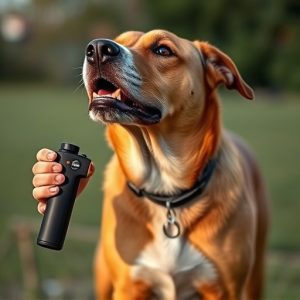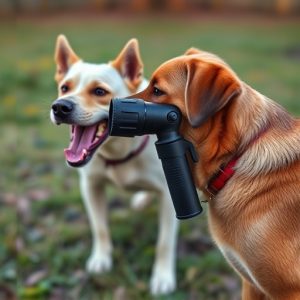Jogging with Protection: Self-Defense Spray for Pet Safety Amid Legal Regulations
Self-defense spray (pepper spray) use for pets is subject to Self Defense Spray Regulations that var…….
Self-defense spray (pepper spray) use for pets is subject to Self Defense Spray Regulations that vary widely between locations. Before employing such measures, pet owners must stay informed about local laws, obtain necessary licenses/permits, understand permitted strengths and quantities, and familiarize themselves with designated use areas. Regular inspection, secure storage, training your dog to deter threats non-lethally, and adherence to regulations are best practices for responsible ownership and safety.
“In today’s diverse and sometimes unpredictable world, ensuring your pet’s safety during outdoor activities like jogging is paramount. This article explores an innovative solution: self-defense dog pepper spray. We delve into understanding its mechanisms, its role in pet protection, and the crucial legal considerations regarding regulations and permissions for using such a tool on pets. Additionally, we provide best practices to ensure both safety and effectiveness when employing this method.”
- Understanding Self-Defense Spray and Its Role in Pet Protection
- Legal Considerations: Regulations and Permissions for Using Pepper Spray on Pets
- Ensuring Safety and Effectiveness: Best Practices for Jogging with a Protective Dog Spray
Understanding Self-Defense Spray and Its Role in Pet Protection
Self-defense spray, also known as pepper spray, is a powerful tool for personal safety and has gained popularity as a protective measure for pets, especially during jogging or outdoor activities. It’s important to understand that this spray is designed to incapacitate an attacker temporarily, giving the user time to escape or seek help. When it comes to pet protection, self-defense spray can be a game-changer, especially in situations where your dog might encounter potentially dangerous scenarios while on their daily jogs.
The use of pepper spray for pets is subject to various regulations and laws, which vary by region. Pet owners must ensure they understand the local guidelines regarding the possession and application of self-defense spray for animals. Given the potential for misuse, many areas have specific restrictions and requirements, including age limits and training mandates. Responsible pet ownership involves staying informed about these regulations to ensure both the safety of your pets and compliance with local laws.
Legal Considerations: Regulations and Permissions for Using Pepper Spray on Pets
When considering using pepper spray for self-defense purposes on a protective dog, it’s paramount to understand the legal considerations and regulations surrounding its use. The application of pepper spray on pets is subject to local laws and guidelines, which can vary widely across different jurisdictions. Some regions have strict restrictions on the possession and use of self-defense sprays, including those designed for animals. Before employing this method for your dog’s protection, it’s crucial to familiarize yourself with the legal framework in your area.
Permissions and regulations often require individuals to obtain licenses or permits to carry and use self-defense spray, including specific types like pepper spray. There might also be restrictions on the strength and quantity of the spray allowed, as well as designated areas where its use is permitted or prohibited. It’s essential to consult local authorities, police departments, or relevant government bodies to gain a clear understanding of the legal implications and ensure compliance with Self Defense Spray Regulations for Pets.
Ensuring Safety and Effectiveness: Best Practices for Jogging with a Protective Dog Spray
When it comes to jogging with a protective dog spray, ensuring safety and effectiveness goes beyond just carrying the right equipment. It involves understanding local self-defense spray regulations, which vary widely depending on your location. Familiarize yourself with the rules regarding pet protection sprays in your area to avoid any legal issues. Some regions have specific restrictions on the type of spray allowed, its strength, and where it can be used.
Best practices for responsible usage include proper handling and storage of the spray. Keep it easily accessible yet out of reach of children and pets when not in use. Regularly inspect the spray for any signs of damage or expiration, ensuring its effectiveness. Additionally, consider your dog’s training and temperament. The spray should be a last resort; train your dog to deter threats through barking, posturing, or other non-lethal means. Responsible ownership and effective training complement the use of self-defense sprays, enhancing both your safety and your pet’s well-being.
When it comes to protecting your pet while jogging, considering a self-defense spray can be a valuable tool. However, it’s crucial to understand and adhere to local regulations regarding the use of pepper spray on pets, ensuring both safety and effectiveness during these walks. By following best practices and staying informed about legal considerations, you can effectively navigate this method as an additional layer of protection for your furry companion.


